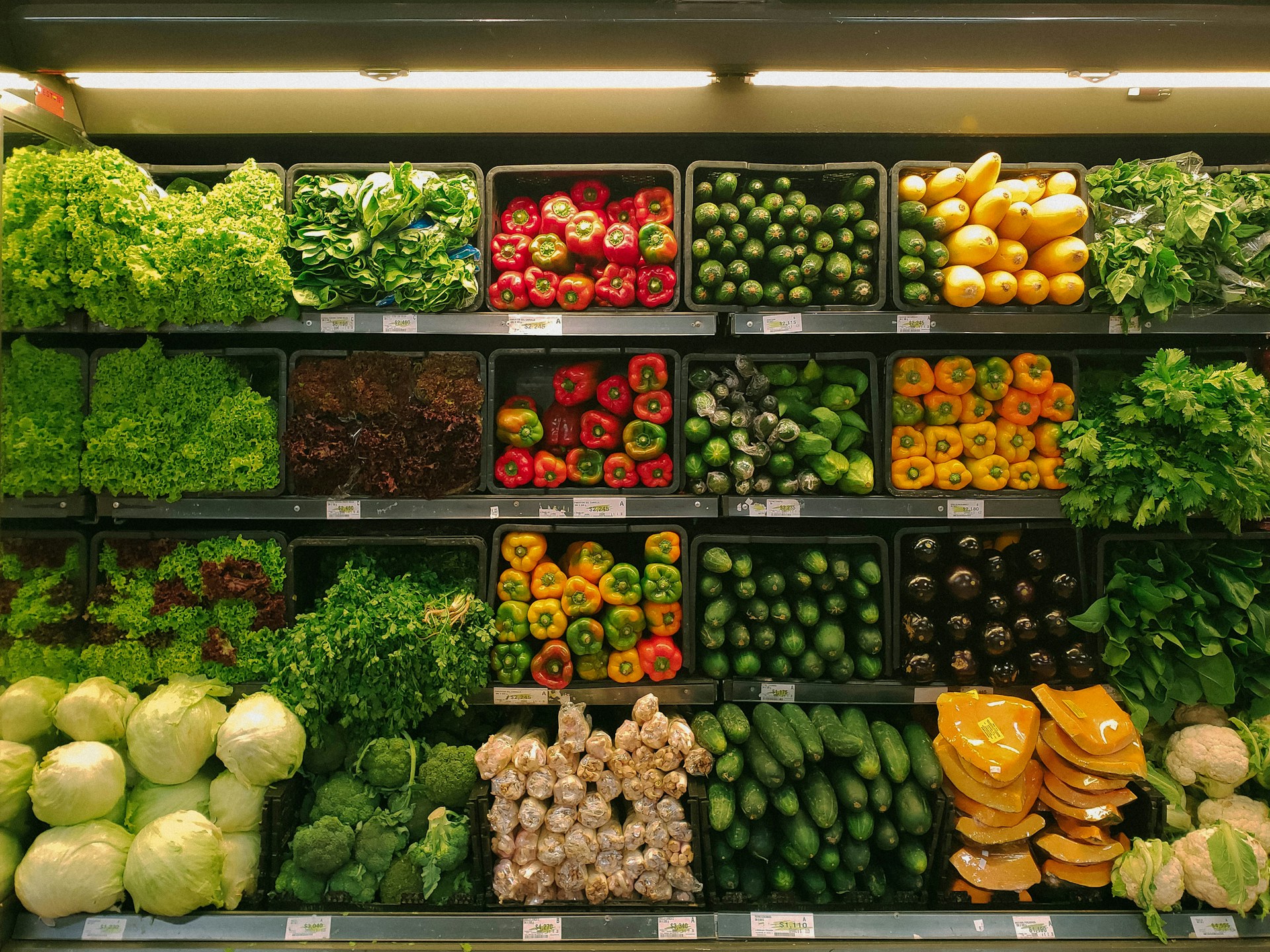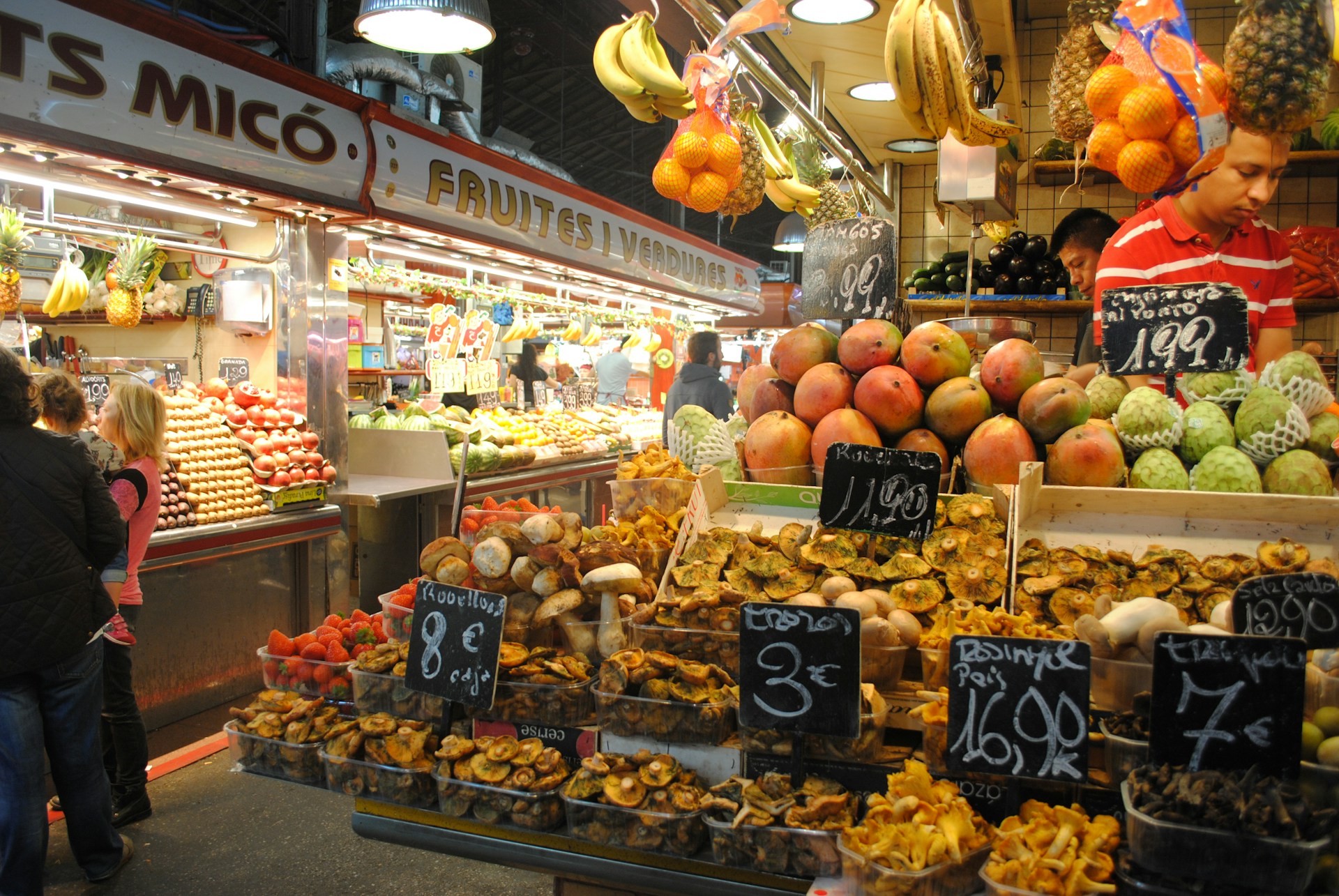Creating a distinctive brand within the produce retail market can be both a challenging and rewarding task.
As competition intensifies, the need to differentiate your entity becomes paramount.
It’s not enough to just sell quality products – your audience must resonate with your brand values and vision.
Now, the focus is increasingly shifting towards an enhanced customer experience and articulating a unique brand story.
This involves understanding market gaps, intimately knowing your audience, and then leveraging this knowledge to deliver an engaging and innovative brand experience.
In this blog post, we will delve into practical strategies to help achieve this.
Tips For Creating A Unique Produce Retail Brand
1. Develop a Clear, Memorable, and Unique Brand Name
One of the most essential steps in building your fresh produce business is to create a clear, memorable, and unique brand name.
This is a vital first step in creating your unique produce retail brand as it helps in setting your brand apart from competition right from the start.
A remarkable brand name serves as a powerful tool that directly communicates with your potential customers, what your brand represents.
Creating a unique brand name requires careful deliberation, and due consideration to not only your brand’s niche, but also its core values.
Your brand name should represent your brand’s identity and resonate with your target audience.
Creating a clear brand name is crucial as it helps your potential customers to easily recognize your brand among many others.
A memorable brand name ensures that your brand is easy to recall keeping it top of mind for the potential customers whenever they think of fresh produce.
Creating a unique brand name, more importantly, sets your brand apart from the competition in the produce retail market.
Your brand name should, therefore, be not just a generic name, but indeed a reflection of your unique brand persona and its distinctive qualities.
Thinking creatively and using linguistic tactics such as alliteration, temptations, or foreign words that align with your brand’s values can help create a unique and memorable brand name.
However, care should be taken to ensure that the brand name is not overly complicated or hard to pronounce.
Spelling difficulties or pronunciations issues can deter potential customers from remembering your brand or searching for it online.
Also, before finalizing the brand name, it is crucial to conduct a thorough trademark search to avoid potential legal issues in the future.
You may also want to consider potential international interpretations of your brand name to ensure it doesn’t unintentionally offend potential customers in different markets.
Overall, developing a clear, memorable, and unique brand name is indeed a critical step in creating a strong and compelling retail produce brand.
2. Offer exclusive, locally-sourced, and sustainable products
One of the primary ways to differentiate your produce retail brand is to offer exclusive, locally-sourced, and sustainable products.
Emphasizing local and sustainable sourcing not only serves to enhance your brand’s reputation, but also reinforces a commitment to quality and environmental responsibility.
By sourcing locally, you support local farmers and producers, which can help foster a sense of community and keep money circulating within your local economy.
Furthermore, offering exclusive products means offering items that cannot be found elsewhere, which adds a layer of intrigue and exclusivity to your brand.
When customers know they can only get certain products from your store, they are more likely to become repeat customers.
Consumers are increasingly conscious of where their food comes from, so focusing on local sourcing and sustainability can greatly enhance your brand’s image and appeal.
Moreover, sustainable sourcing practices demonstrate a respect for the Earth and its resources, which can resonate with customers who are passionate about environmental issues.
However, merely sourcing locally and sustainably is not enough – it should also be a significant part of your brand’s messaging.
Transparency in your sourcing practices can boost customer trust and loyalty.
Consider partnering with local farmers and producers and telling their stories as part of your brand narrative.
This adds an element of authenticity and transparency that customers appreciate.
It is integral for customers to see, understand, and believe in your commitment to locally sourced and sustainable products.
Additionally, it is equally important to have staff that can knowledgeably communicate your brand’s commitment to these practices.
After all, the products on your shelves are the physical embodiment of your brand’s values and commitment to local sourcing and sustainability.
Therefore, ensuring these products are presented in the best possible way, with the right messaging and context, is essential to building a strong, unique brand in the overcrowded retail produce market.
The ultimate goal is to create a connection between your customers and your products, bringing them closer to understanding the value and significance of locally sourced and sustainable foods.
By implementing these practices, you will differentiate your brand from competitors, establish a distinct brand identity, and attract a loyal customer base that appreciates your commitment to quality, sustainability, and local communities.
3. Create a visually enticing and recognizable logo.
One of the most crucial elements in creating a unique produce retail brand is the design of a visually enticing and recognizable logo.
When customers see your logo, they should instantly associate it with your brand and the quality products that you offer.
A well-designed logo can dramatically enhance brand recognition and create a lasting impression in the minds of your customers.
Moreover, a great logo isn’t just about aesthetic appeal— it’s about encapsulating the very essence of your brand.
Your logo needs to tell a story about your brand, its values, and its commitment to providing locally-sourced, sustainable products.
In a way, think of your logo as the face of your brand — it’s the first thing customers see, and it’s what they’ll remember.
Therefore, building an effective logo requires careful thought, creative input, and attention to detail.
You should consider working with professional graphic designers who understand the harmony between aesthetics and function.
An experienced designer would know how to incorporate crucial elements such as color psychology, typography, and symbolism into your logo design.
In doing so, they can craft a design that is not only visually striking but also, and more importantly, conveys the unique selling points of your brand.
Remember, a well-crafted logo makes your brand stand out from the competition
It’s a visual symbol that differentiates you from other produce retailers and makes your brand instantly recognizable in a crowded marketplace.
However, make sure your logo stays true to your brand and its objectives.
If you’re offering organic, locally-sourced produce, for example, you might want your logo to reflect these attributes by utilizing earthy colors and natural imagery.
Ultimately, the most successful logos are the ones that are simple, yet powerful – capturing the essence of the brand while resonating with the target audience.
That said, creating a visually enticing and recognizable logo isn’t a one-and-done deal – it requires trial, error, and continuous refinement over time.
4. Craft an Authentic, Relatable Brand Story
In the world of produce retail branding, having a compelling and genuine brand story is as critical as providing high-quality, fresh produce.
Your brand story serves as a narration of what your brand represents and what it has been through to get to where it is today.
A truly authentic and relatable brand story creates a profound connection between your brand and your customers.
It helps to elevate your brand value, cultivate brand loyalty, and creates a relatable persona that your customers can identify with.
To craft a compelling brand story, it’s essential to understand that emotion drives engagement.
Delve into your brand’s roots, and communicate your journey, your mission, your passion, and the values that guide you.
Are your products sourced from local farmers committed to sustainable practices? Tell that story.
The hard work and love that goes into planting, growing, harvesting, and selling each product can be powerful narratives for customers to connect with.
Your brand story should resonate with your target audience, meeting them at the point of their needs or interests.
It’s not just about what you sell; it’s also about what you stand for and how you contribute to the community or the world at large.
Authentic storytelling can create a clear differentiation from other brands and help build customer loyalty.
Relating your brand story to your customers’ lifestyle can make a significant impact on how they perceive your brand.
Last but not the least, consistently sharing your brand story across all touchpoints — from your website to your social media profiles to your newsletters, creates a cohesive brand identity.
Customers value brands they can connect with and trust, and a powerful, authentic, and relatable brand story can build that trust.
A well-crafted brand story is not merely a marketing tool but an integral part of your brand identity and culture.
A truly authentic and relatable brand story creates a profound connection between your brand and your customers.
5. Prioritize Exceptional Customer Service and Experiences.
Undeniably, an essential way to create a unique produce retail brand is to prioritize exceptional customer service and experiences.
Remember, your clientele doesn’t only buy products, they buy experiences, so every interaction matters.
Start by understanding your customers’ needs and preferences through active listening and observation.
Empower your employees to go the extra mile in satisfaction delivery.
Implement appropriate training programs to ensure your staff carries out their tasks effectively and maintains high customer service standards.
Take advantage of technology to streamline the shopping experience, simplify payment processes, and enhance after-sale services.
Engage customers on a personal level, making their shopping experience memorable and prompting them to return.
Be proactive in reducing potential inconveniences such as long queues and out-of-stock scenarios.
Respond promptly and sincerely to customers’ complaints or inquiries, ensuring every interaction ends on a positive note.
Offer incentives like loyalty programs, rewards, and discounts to establish a strong emotional connection with your loyal customer base.
Always look for unique ways to surprise and delight your customers to give them reasons to choose your brand over others.
Create a friendly and cozy ambiance inside your store that presents shopping as an enjoyable leisure activity rather than a mundane chore.
On social media, maintain an active and responsive presence, engaging your customers with interactive content like recipes, DIY tips, and product usage guides.
Consider hosting community events like cooking classes or farmer meet-and-greets to enrich your customer’s in-store experience.
Remember to solicit feedback from your customers to understand how well you’re meeting their needs and where changes might be needed.
By doing so, you show your dedication towards providing a tailored service and products while fostering a stronger connection with your customer base.
The Bottom Line
Establishing a remarkable and noteworthy footing in the highly competitive business market is certainly a daunting journey.
However, remembering to carve out a differentiated identity with a clear and unforgettable brand name, alongside providing exclusive, locally-sourced and sustainable products is a vital step.
Coupling this with the creation of a visually attractive and identifiable logo, while conveying a true to heart and relatable brand story can further elevate its presence.
High priority should consistently be afforded to delivering uncompromised customer service and experiences, as a satisfied customer is arguably the most significant champion for a brand.
Hence, blending these elements effectively can not only aid in business success but also in carving an indelible impression on consumers.




